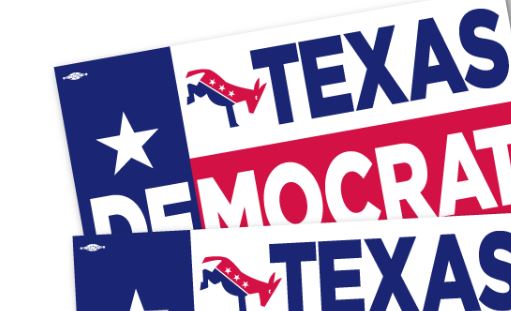Texas has been trending for a long time. Is it time for us to really dream of what can be, what will be?
The good news in Texas
A recent poll from the Dallas Morning News showed former Vice President Joseph R. Biden (D-DE) and Senator Bernard Sanders leading by 2% in a presidential election in Texas against President Donald J. Trump. Granted, this was within the margin of error, but it tantalized political observers locally and nationally. It is consistent with a UT poll showing a state split down the middle on re-electing the president but with 60% of independents likely voting against him. Is Trump losing Texas a Democratic pipe dream or something worth investigating?
This led me to re-analyze the final numbers in last year’s Bhatany Report on the 2018 U.S. Senate race in Texas between Senator Rafael Edward “Ted” Cruz and Congressman Robert Francis “Beto” O’Rourke. The short story is Texas is a young, diverse, urban, and immigrant state which has very low voter turnout. Typically, 50th of the 50 states. The few who vote (especially in gubernatorial years) are older and disproportionately white because cities and the Texas-Mexico border have appalling few voters. For a state with 28.7 million residents with 18 million eligible voters and 15.8 million registered voters, there are not many voters.
How few? Presidential elections this century have all had less than 9 million votes while midterm elections have been around 5 million or less until last year’s Senate race jumped up to 8.375 million votes. The interesting number I keep finding is no Republican has gotten more than 4.68 million votes. Remember, there are 15.8 million registered voters in the state.
Stagnation and Growth Reversed
The Republican Party of Texas used to be the party of growth. Between 1976 and 2000, the Republican presidential vote doubled. Now it seems to have run out of gas.
Presidential Vote
|
Year |
Republican |
Democrat |
Margin |
|
2000 |
3,799,639 |
2,433,746 |
1,365,893 |
|
2004 |
4,526,917 |
2,832,704 |
1,694,213 |
|
2008 |
4,479,328 |
3,528,663 |
950,665 |
|
2012 |
4,569,843 |
3,308,124 |
1,261,713 |
|
2016 |
4,685,047 |
3,877,868 |
807,179 |
The most successful Republican candidates keep getting about the same number of votes since 2004 despite the state adding more than 6 million residents. There is not much variation between Donald Trump (4.68 million), Gregg Abbott (4.64 million in 2018), Mitt Romney (4.57 million), John McCain (4.48 million), and George W. Bush (4.52 million in 2004). Before 2018, the typical Republican candidate for governor only got 2.7 million votes.
Since 2000, the Democratic vote is growing after decades of stagnation. Jimmy Carter won Texas in 1976 with 2 million votes which is not much different from Al Gore’s 2.4 million in 2000. Since 2000, we have John Kerry (2.83 million), Barack Obama (3.3 million to 3.5 million), and Hillary Clinton (3.88 million) slowly gaining on Republican presidential candidate’s 4.5 – 4.6 million votes. The Democratic gubernatorial candidate typically crashes out with 1.8 – 2 million votes until 2018 when Sheriff Lupe Valdez somehow scored more votes than Barack Obama in 2008 despite running an awful campaign against a strong incumbent. Regardless of the quality of the Democratic presidential candidate, the Democratic presidential candidate is gaining 90,257 votes per year since the year 2000 which is 361,030 vote per presidential election.
4.5 million votes or Bust
That makes it safe to say that the Democratic nominee for president in 2020, regardless of quality, should get 4.2 million votes in Texas. That’s not bad since no Democrat reached the 4 million vote mark until Congressman O’Rourke’s 2018 campaign. But it is not enough to win the presidency.
President Trump could lose votes in Texas compared to 2016, but I doubt he falls below 4.5 million votes. Due to the unusually high Libertarian vote in 2016, it is hard to predict how much he could lose or gain from 2016. He could get 4.9 million at most and 4.5 million at the least. My gut feeling says that he would perform around Gov. Gregg Abbott’s 2018 re-election number of 4.64 million.
Is it hopeless for Democrats? Below the presidential election are many elections that likely would be winnable with 4.2 million votes such as John Cornyn’s U.S. Senate race in 2020. A vote that high could lead to 1-2 Republican congressmen losing office and perhaps a lower level statewide office or the Texas House of Representatives. There are always many reasons to vote besides the national media’s White House obsession. If trends continue for 6 more years, Texas will definitely be a swing state in 2024.
If you like our stories please visit our support page and keep us doing what we must do.

